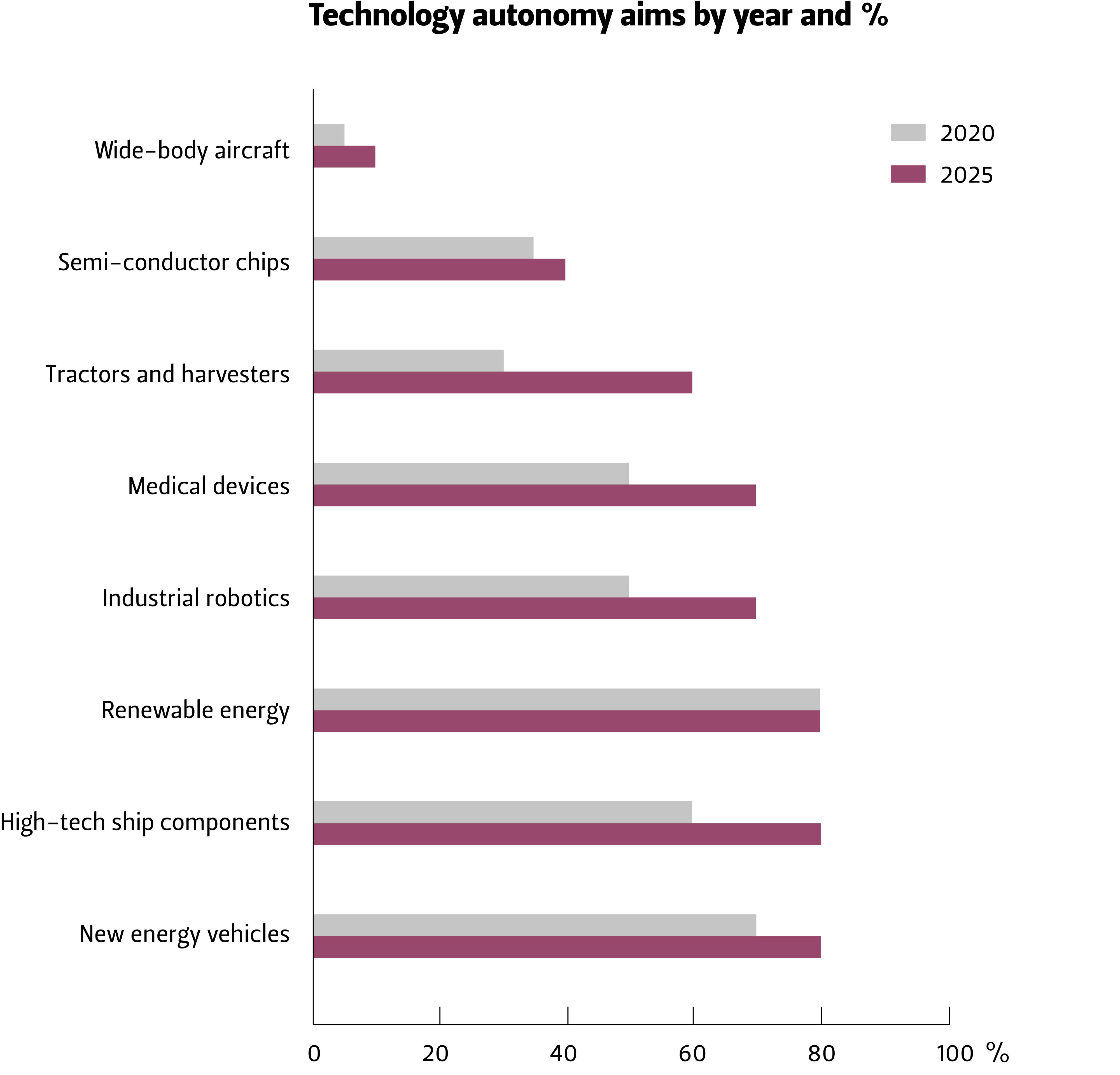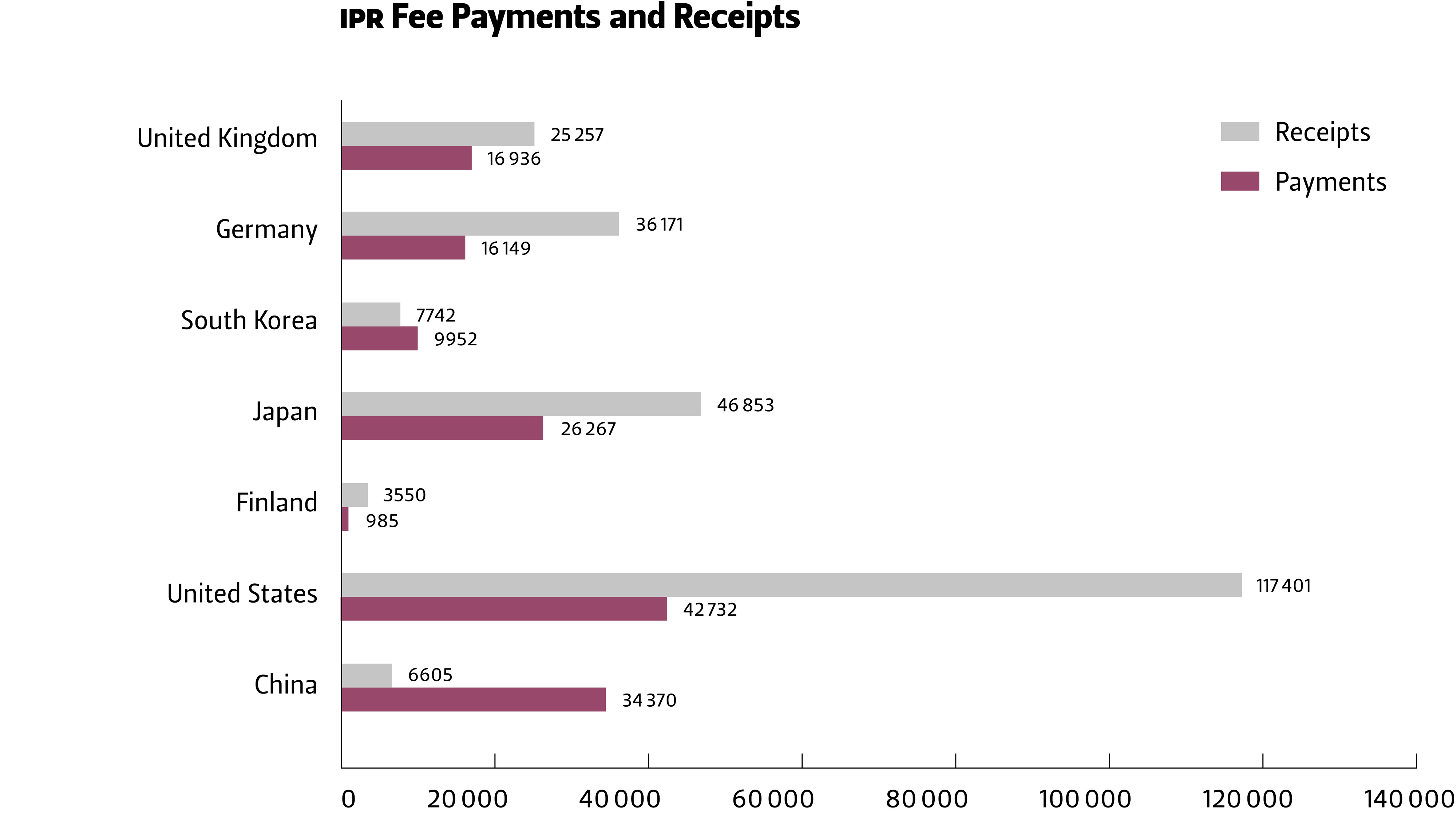yhteenveto
Kansainvälisestä kaupasta ja investoinneista on tullut keskeisiä strategisia välineitä suurvaltakamppailulle, minkä vuoksi valtiot pyrkivät hallinnoimaan maailmaa yhdistäviä taloudellisia verkostoja. Käyttäessään yrityksiä politiikan välineenä maat muuttavat riskinäkymiä sekä julkisille toimijoille että yksityisille yrityksille.
Talouden turvallistaminen on ensimmäinen riskinaiheuttaja. Valtiot yrittävät vahvistaa otettaan yritysten toiminnasta erityisesti aloilla, joita pidetään valtion toiminnan kannalta strategisina ja sensitiivisinä.
Toinen riskin aiheuttaja syntyy kansainvälisen talouden balkanisaatiosta, jossa talous hajotettaisiin toisistaan erillään toimiviin kupliin tai blokkeihin. Kiihtyvä valtiollinen kilpailu standardien kehittämisestä on otollista maaperää tällaisten riskien toteutumiselle.
Viimeinen riskinaiheuttaja on talouden aseellistaminen sanktioiden ja vientivalvonnan yleistyessä. Tämä toisi mukanaan enemmän rajoituksia yrityksille ja asettaisi paineita kansainväliselle sääntöperustaiselle järjestelmälle.
Uudenlainen ”geoekonomisen riskin” käsite on syytä tunnistaa. Riskejä arvioimalla on mahdollista suojautua orastavilta epävarmuustekijöiltä, jotka yhdistyvät globaalin talouden uusiin tarkoitusperiin.
Introduction
The present-day great-power contest between the United States and China is not fought on the traditional battlefield, but in the global economy. Economics has become a strategic means whereby both the US and China attempt to control the economic networks and links that connect the world. In waging this geoeconomic battle, they need businesses that make up the present-day networked global economy. For both public and private firms, the threat is that they increasingly become used as pawns for these great-power ambitions. For companies around the world, it introduces a new source of business risk – referred to here as ‘geoeconomic risk’.
In this paper, geoeconomic risk denotes the risks associated with economics being used by states for power political objectives. This not only affects US and Chinese companies, but reverberates throughout the networked global economy. States defend themselves against this geoeconomic power politics by increasing their control over businesses in strategic sectors of the economy. It manifests itself in the panoply of new means of trade and export controls, investment screening mechanisms, data localization measures, sanctions and subsidies.[1] Some of these measures include:
- Increased public scrutiny over direct investment and foreign state subsidies in order to prevent the foreign control of critical infrastructures or technologies, and to ensure fair competition.
- Controls regulating the export of certain technologies with a dual-use potential, and thus deemed to pose a risk to national and international security.
- State incentives aimed at the redesign of global supply chains, with the purpose of ensuring supply of sensitive technologies.
- Actions to discourage universities and research centres from hosting students from certain countries so as to prevent the dissemination of knowledge considered strategic.
- Measures to limit access to fresh capital, such as the US delisting of Chinese companies from stock markets, or redirecting government pension funds.
- Public infrastructure and R&D investment in disruptive technologies, such as the EU’s efforts to boost the digital transformation (cloud computing, AI).
- EU tools to unilaterally enforce trade obligations (e.g. through tariffs), bypassing the paralyzed WTO dispute settlement system.
- EU instruments to shield companies from economic coercion, such as US extra-territorial sanctions (Blocking Statute, INSTEX).
These measures defy the market-liberal logic that has underpinned global economic relations in recent decades. They illustrate the broad use of economic tools by states to attain strategic and security goals, and the way the relationship between economics and security is changing. States are increasingly concerned about the security risks that ‘hyper-connectivity’ and interdependence pose for state sovereignty and economic resilience. This increased convergence of economic and security thinking is putting pressure on the rules that govern the international economy, and by extension the operating environment of both public and private economic actors. A key driver of change seems to be digital transformation. It is kick-starting a new form of economy in which data is becoming the most important factor of production.
These developments challenge the rules-based free-market principles that ‘Western’ businesses have grown accustomed to. States’ pursuit of strategic and security interests is gradually encroaching upon the economic realm, led until now by market actors. Strategic interests, such as controlling the access to critical technologies, increasingly clashes with profit and efficiency. This collision expresses itself in the emergence of geoeconomic risk. Corporate risk assessment frameworks will need to be updated to take account of the new risk. This means that firms need to keep track of the sector-specific strategic and security-related developments.
This Briefing Paper looks at the emergence of geoeconomic risk and provides some tentative thoughts on its implications. In particular, it shows how three geoeconomic drivers – the securitization, balkanization, and weaponization of the global economy – are refashioning the operating environment for companies around the world.
Geoeconomic dependence: The securitization of the economy
These developments are taking place at a time when the level of global connectivity and interdependence is unprecedented. It casts the concept of interdependence in a new, more nuanced light than the positive angle from which it has predominantly been viewed during the post-Cold War period.[2] As recently stated by EU High Representative Josep Borrell, “today we are in a situation where economic interdependence is becoming politically very conflictual”.[3] Hence, for states, global interdependence has emerged as a national security issue. There are two principal drivers of this trend.
First, the centralization of global economic networks creates an infrastructure in which economic exchanges flow in a hub-and-spoke-like manner. Contrary to earlier expectations, globalization has not produced a ‘flat’ world of diffuse power relations and reciprocal dependencies whereby states will refrain from coercive strategies to avoid damaging themselves. Instead, global economic relations and networks have tended to generate evermore asymmetric dependencies that can be manipulated, exploited and leveraged for strategic benefit by the less vulnerable parties in these relationships. States that fail to counterbalance these dependencies run the risk of having their strategic autonomy circumscribed and, by extension, becoming pawns in the game of power politics. The new data-driven economy seems to be heightening this tendency, with the control of data and its exchange becoming evermore centralized.
Second, the privatization of critical functions and infrastructure has broadened the scope of national security to the international economic realm. Today, many of the critical functions of society are operated and managed by private sector actors, who in turn are highly dependent on global supply chains and markets. The notion of security of supply has gained increasing salience, especially in the wake of the Covid-19 crisis, with states starting to pay more attention to self-sufficiency, extended supply chain security and national resilience. In most countries, critical societal and economic functions cannot be secured by the state alone, as a result of which various forms of comprehensive and whole-of-society approaches to security have proliferated.[4] These arrangements also tie companies into the national security frameworks of their host countries. In the worst case, such linking will create pressures to choose sides, as links to national security in one country become increasingly viewed as a potential risk in others.
Taken together, these trends are elevating economic security to the scale of strategic priorities for most states around the world. The economy is being ‘securitized’ as states intervene out of strategic concern to safeguard ‘strategic assets’, ‘critical infrastructures’ or ‘emerging technologies’ from the free operation of market forces. New trade and export controls, investment screening and data localization measures are being adopted in order to reduce vulnerabilities to geoeconomic dependence. Take the EU’s framework for foreign direct investment screening, for instance. While it does not bind member states to any specific mechanisms or industries to protect against foreign acquisition, it may well give rise to a wave of tighter public scrutiny across the EU.
For the private sector, the increasing securitization of the economy entails a new source of business risk. Firms can no longer safely assume that the state will adopt an arm’s length approach to markets. Market-led transactions are coming under increasing scrutiny. Yet interpreting this simply as a traditional political risk would be misleading. State interventionism will thus not be as broad as in traditional state capitalism, but more targeted and selective, mainly focusing on safeguarding control of strategic assets.[5] State leverage will vary significantly depending on the economic sector and can be abruptly adjusted as the strategic environment experiences change. In sectors considered strategic and security-sensitive, states will attempt to coordinate business operations and exchanges to a larger degree, whereas other sectors will be left to operate according to market-oriented principles. The sectors that will be considered security-sensitive in the future are often unpredictable. Consequently, geoeconomic risk is subject to dynamic change and requires constant monitoring. This will place a new burden on companies in an increasing number of fields.
Geoeconomic competition: The balkanization of the economy
The growing propensity to see global interdependence through the lens of geoeconomic dependence breeds antagonistic dynamics in global economic relations, which is currently evident in the decoupling of technology value and supply chains. Whilst principally taking place between China and the United States, it has global implications and the potential to become globally pervasive as global technology value and supply chains are not neatly organized around the United States and China.
As the race for global dominance in technologies deemed critical for economic competitiveness and national security extends to the global value and supply chains, the likelihood of disruptions increases simultaneously. Whilst the “great decoupling” is primarily seen as a strategic-level great-power game, it also inevitably has a negative impact on the norms and processes of global trade. It will thus also impact private businesses and consumers.
An emerging area of geoeconomic competition is the global technical standard-setting regimes, which function as key enablers of global markets in technology products and services. In many ways, standards have acted as a backbone for globalization. Without technical standardization and the interoperability they establish, many of the technical solutions that we have grown accustomed to would not work, or even be available globally. After all, the interoperability established by technical standards allows us to utilize our mobile phones overseas, make payments and cash withdrawals overseas, and purchase products and services from global markets with the expectation that they will work safely in any location. Technical standards have also enabled the global flow infrastructures, such as airports, ports and standardized shipping containers.
Despite their strategic significance, the traditional approach to technical standards in the developed nations has been a bottom-up effort led by standardization associations and technical experts organized in voting committees making decisions based on the consensus principle. This technocratic approach seems to be changing, as we are witnessing a renewed effort by states to engage in standard-setting. The principal driver of this change has been China’s emergence as a global power in technology and its different approach to technical standards, which directly challenges the hitherto prevailing Western paradigm of technical standards largely based on a market-based and bottom-up approach.
Thus far, the global value chains have been organized in such a way that the United States and Europe have occupied the higher rungs on the ladder, and have also controlled the technical standards as a consequence. In the course of China’s success as a global trading power, it has distinctively been a follower and paid licence fees to its Western counterparts (see Figure 1). China now feels that this position has become increasingly unfair. By pouring double-digit investments into research and development for decades, China has subsequently produced its fair share of leading technologies. Yet, from China’s point of view, the West continues to block market access for Chinese technologies, hindering its ability to climb the global value chain and overcome the ‘middle-income trap’.

Figure 1. Intellectual property rights, fee payments and receipts – US $ millions (2019). Source: World Bank, World Development Indicators
As effectively stated in the Made in China 2025 strategy, China wants to climb the proverbial ladder of global value chains to become an innovator in its own right and start earning fees for itself. This strategy is not only focused on economic development by improving international competitiveness. China’s “dual circulation” strategy envisions growth by increasing its share of the global markets and simultaneously protecting its domestic market from “unfair” foreign competition and unwanted interference. As such, the Made in China 2025 strategy emphasizes “flow control” and “self-sufficiency”, especially in technologies deemed critical for national security.

Figure 2. Made in China 2025 Industrial Policy Aims.
Source: Expert Commission for the Construction of a Manufacturing Superpower.
Notions of self-sufficiency and economic autonomy in conjunction with the accelerating geoeconomic competition for controlling standards risk leading to a ‘balkanization’ of the global economy, namely to its disintegration into regional economies largely decoupled from each other. The decoupling that is underway, particularly in the technological sphere between China and the United States, may in some scenarios be followed by the splintering of Europe into its own economically autonomous sphere of control.
The risks for European businesses depend on the extent of this balkanization. A modest differentiation of standards would already increase development, production and distribution costs. However, as the experience around 5G security standards and the banning of Huawei from the US market shows, the balkanization may go much further. The spread of the decoupling into data and cloud services will further risk a splintering of technology development into separate technology ecosystems. This poses a particular risk to European businesses, as these ecosystems are primarily led by US or Chinese champions.
The decoupling of supply chains can already be observed in how technological products designated for export to the US are not allowed to include certain Chinese parts, or when US authorities restrict certain parts for export to China. China may also seek to protect its domestic market by standard-setting, in line with the “dual circulation” strategy, to the detriment of Western companies. Uncertainty in the planning, the monitoring of regulations, and the detangling of supply chains comes with a steep price tag.
Geoeconomic disruption: The weaponization of the economy
Both the increasing securitization and balkanization of the global economy are closely related to a third trend – the weaponization of the economy. Recent years have seen a proliferation of the use of economic sanctions. These include trade sanctions, export controls, boycotts, aid suspensions, financial sanctions and asset seizures. In fact, all types of economic links and flows – aid, trade, finance, investment, travel and currency – can be used to threaten or actually disrupt economic exchanges and impose economic costs. For the United States, the use of economic sanctions has become a centrepiece of foreign policy. In the aftermath of 9/11, the US developed a new kind of economic warfare involving “the use of financial tools, pressure and market forces to leverage the banking sector, private-sector interests, and foreign partners in order to isolate rogue actors from the international financial and commercial systems and eliminate their funding sources”.[6] Subsequently, the range of sanctions tools has broadened further, and both China and the European Union are increasingly using them as a strategic means independently of the UN sanctions frameworks.
For the private sector, the game changer is the accelerating use of so-called secondary, ‘extra- territorial’ sanctions. While primary, ‘regular’ sanctions prohibit citizens and firms of the sanctioning country from doing business with companies or individuals of the target country, secondary sanctions, by contrast, have been designed to bar citizens from doing business not only with sanctioned targets, but also with any third parties dealing with them. So, for instance, US citizens would be prohibited from dealing with a French bank giving a loan to an Iranian company, even if the loan were legal under French law. Foreign companies can be effectively shut out of the US financial system. As most businesses around the globe are either involved in the American financial system or are active on the US market, secondary sanctions “give U.S. policymakers a far longer reach than they would otherwise enjoy”.[7]
The US has also extended its use of export controls to limit the transfer of new technologies to China. The US and the EU have traditionally used export controls to ensure that exports of dual-use items that can have both a civilian and a military purpose are not contributing to illegal weapons of mass destruction programmes or, more recently, acts of terrorism and human rights abuses. During Trump’s presidency, the US was seen to use export controls to contain China. China responded with a new export control law that allows it to take measures against domestic and foreign companies, or other parties that are perceived to be abusing export controls and threatening China’s interests and national security.
The weaponization of economic networks risks further propelling the balkanization of the global economy as actors start to hedge against the risk of being strong-armed by foreign actors. China is already seeking to create a parallel financial infrastructure to the largely US-controlled global financial system. China has launched the China International Payment System (CIPS) as an alternative to the US-dominated global payment system SWIFT, and is gearing up for the internationalization of a digital yuan as an alternative to the dollar. Even Europe has created its own INSTEX (albeit with limited reach and success) as an alternative payment instrument to process transactions with Iran. The euro is also increasingly promoted as an alternative currency to facilitate energy imports.
The weaponization of economic networks incentivizes private businesses to differentiate their markets and choose between the US, for example, or the rest of the world as a primary market for their economic activity. This extra-territorial aspect is at the core of the new geoeconomic risk scenario. The crucial implication for the private sector is that the development of global politics needs to be tracked even more carefully than in the past. Foresight into possible future scenarios and conflicts between major powers becomes more valuable, as political developments can have immediate and direct implications for business operations. This, however, demands novel and improved capabilities from corporate risk managers and the elevation of geoeconomic risk to the board room agenda.
Conclusion – Mapping geoeconomic risk from dependence to disruption
Geoeconomics refers to the “geostrategic use of economic power”.[8] As a state practice, it functions by leveraging economic networks and interdependencies for strategic goals. Unlike the Cold War, the present-day great-power contest between China and the United States is being predominantly waged by economic means in which the ultimate goal is to gain control of the networked global economy, and use that control for strategic benefit.
By operating many of the economic hubs, networks and flows that make up today’s global economy, businesses are the most important vehicles for carrying out geoeconomic power projection.[9] Not only China, but also the US and the EU are therefore increasingly seeking to increase state leverage over strategic sectors of the economy. It manifests itself in the panoply of new means of trade and export controls, investment screening mechanisms, sanctions and subsidies. The technical standard-setting regimes are also currently emerging as a new battlefield in this new reality.
The three geoeconomic drivers introduced above – the securitization, balkanization, and weaponization of the global economy – are refashioning the operating environment for economic actors around the world. By hollowing out the predominant market rules prevailing until recently, the risk picture for many businesses is undergoing major change. Importantly, this not only concerns private and public corporations in sectors of immediate and obvious strategic importance. What are deemed strategic assets may vary extensively from one context to another, making it difficult for businesses to assess their own sector-specific risks (and opportunities). The production of certain medical equipment and vaccines suddenly became a strategic asset with Covid-19, having largely been outsourced overseas by most countries previously. Yet in most corporate risk management frameworks, these geoeconomic risks remain unaccounted for. In effect, as a concept, ‘geoeconomic risk’ remains largely undefined and the precise risk picture unclear.
What is clear is that geoeconomic risks are not the political risks that many businesses have established a track record against. Political risks are often seen as being specific to individual markets, and as originating from changes in the political preferences and landscape within a country (take the growing demand for environmental protection, for instance). Geoeconomic risks, by contrast, are usually transnational and transboundary, as in the case of the US-China decoupling that is reverberating across the global economy. Here, the drivers are not the changes in domestic political preferences, but international, often more detached developments (for example, the Ukraine crisis led to export restrictions on certain dual-use goods for European companies). Moreover, since the global value and supply chains are detached from nation states, geoeconomic disruptions are a concern for more than just the parties directly targeted. US sanctions targeting China will therefore not only affect Chinese companies but companies from anywhere operating in China, or that trade in goods and services that are targeted with such measures. As a result of the transnational nature of global value chains, virtually any organization deemed part of the system can be impacted, if not directly then indirectly.
In order to enable businesses to account for “geoeconomic risk”, it needs to be better defined and supported by an appropriate universal typology. More data and a better understanding of the root causes, agents, means and implications of geoeconomic risk are therefore required.
Endnotes
[1] Henrique Choer Moraes and Mikael Wigell, ‘The Emergence of Strategic Capitalism: Geoeconomics, Corporate Statecraft and the Repurposing of the Global Economy’, FIIA Working Paper 117 (2020), https://www.fiia.fi/en/publication/the-emergence-of-strategic-capitalism.
[2] For a discussion, see Christian O. Fjäder, ‘Interdependence as Dependence: Economic Security in the Age of Global Interconnectedness’, in Mikael Wigell, Sören Scholvin and Mika Aaltola (eds.), Geo-economics and Power Politics in the 21st Century: The Revival of Economic Statecraft (London: Routledge, 2018).
[3] Josep Borrell, ‘Why European strategic autonomy matters’, European External Action Service blog, 3 December 2020, https://eeas.europa.eu/headquarters/headquarters-homepage/89865/why-european-strategic-autonomy-matters_en.
[4] Mikael Wigell, Harri Mikkola and Tapio Juntunen, ‘Best Practices in the Whole-of-Society Approach in Countering Hybrid Threats’, INGE European Parliament Study (Brussels: European Union, 2021), https://www.europarl.europa.eu/RegData/etudes/STUD/2021/653632/EXPO_STU(2021)653632_EN.pdf.
[5] Henrique Choer Moraes and Mikael Wigell, ‘The Emergence of Strategic Capitalism: Geoeconomics, Corporate Statecraft and the Repurposing of the Global Economy’, FIIA Working Paper 117 (2020), https://www.fiia.fi/en/publication/the-emergence-of-strategic-capitalism.
[6] Juan C. Zarate, Treasury’s War: The Unleashing of a New Era of Financial Warfare (Philadelphia: Public Affairs, 2015), p. xi.
[7] Jacob J. Lew and Richard Nephew, ‘The Use and Misuse of Economic Statecraft: How Washington Is Abusing Its Financial Might’, Foreign Affairs 97, no. 6 (2018): 141-142.
[8] Mikael Wigell, ‘Conceptualizing Regional Powers’ Geoeconomic Strategies: Neo-Imperialism, Neo-Mercantilism, Hegemony, and Liberal Institutionalism’, Asia Europe Journal 14, no. 2 (2016): 137.
[9] Geoffrey Gertz and Miles R. Evers, ‘Geoeconomic competition: Will state capitalism win?’, The Washington Quarterly 43: 2, 2020, p. 117.



